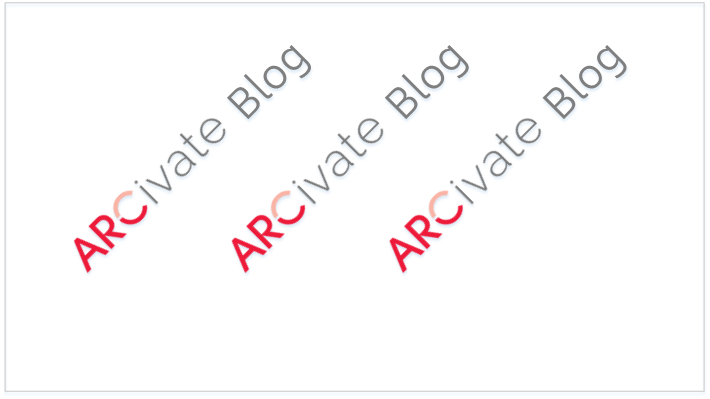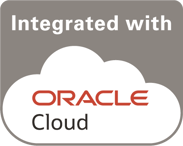
EBS to Fusion Cloud – Integration Change or Invoice Solution Change?
Stick or Twist
Upgrade from Oracle E-Business Suite to Oracle Fusion Cloud ERP?
Are you considering invoice automation but don’t want to limit your options for going from E-Business Suite to Fusion ERP Cloud down the road? Conversely, if the decision has already been made to make that shift to the cloud, what are the next steps when it comes to invoice automation? Does your current solution integrate with Fusion ERP Cloud? If so, is that integration certified? Do you want to take this opportunity to upgrade or replace your existing invoice automation solution? What have you considered in terms of process change?
Integration Change
To keep things simple, yes there is an integration change between E-Business Suite and ERP Cloud (Fusion). Many connections to Oracle E-Business Suite could be done at the database level with a DB Link and then methods for getting invoices in varies from inserting records into the Open Interface Tables to provision of a flat file that needs to be uploaded. Oracle ERP Cloud still provides those integrations for inserting invoices, they are just via an API, which can be a two-way integration or using the FBDI (File Based Data Import) function to load records, one-way integration.
The main difference though between EBS and ERP Cloud is that you no longer have direct access to a database. The data extraction method is different, and this is a key factor that needs to be overcome by the solution that you are considering. There are ways to automate this integration and a solution can be connected within hours to your ERP Cloud environment. The key thing to look for when you integrate your Invoice Automation solution is whether the application has a certified integration. How can you check this?
- Is the solution provided by an Oracle Partner? If No then they are unlikely to have had it certified by Oracle
- Does the solution have the Integrated with Oracle Cloud Certification – Look for the following Logos
Do you upgrade or replace?

Depending on when you implemented your existing invoice automation solution, it could be that it has reached the end-of-life stage. If you implemented the solution in the past 3-4 years it could be that you are already running a SaaS invoice automation solution.
If the solution is currently on-premise then you have a more important decision to make. Is the current solution worth upgrading to the provider’s latest solution, which you would hope is cloud-based, or do you implement it with a new solution that is available in the cloud?
With legacy on-premise applications our view would be that you cut and run, don’t waste time in trying to take your existing hardware and solution and try to connect it to your new SaaS ERP Cloud environment. The market has changed and keeping on-premise applications that were often resource heavy doesn’t reflect current standards.
The likelihood is that you are running a capture application for scanning, an OCR application to read and index the document and then finally a workflow and document management application to route and store the document. This is overly complex and only benefits businesses with high volumes. New models are available and the starting point for purchasing such a solution requires a lower volume.
ERP Cloud Differences?
It’s easy to think that ERP Cloud was based on E-Business Suite and therefore there won’t be many differences. From an invoice automation perspective, there are many differences. See our blog on whether IDR works for you to see some of those differences and challenges. There are some data differences or nuances when it comes to ERP Cloud. Is your solution provider aware of these? Have you considered line descriptions on invoices that need to match the PO for insertion into ERP Cloud?
This is why our recommendation is to always ensure you are working with a provider that has specialist knowledge of your ERP. Be wary of any provider that says “We integrate with everything”. There is a difference between connecting with an ERP and integrating with an ERP. The former tends to mean a one-way “integration”. The latter will be a two-way connection with a proper handshake between the applications in the event there is ever an issue with resolving an invoice.
Too often issues occur with an invoice that requires a resolution in the open interface causing an invoice to be ”stuck” or “lost”. Ensure the solution you implement can feedback when an invoice is rejected by the ERP.
Stick or twist?
 With the solutions that have been implemented more recently, your business will have a decision to make on whether it is adding sufficient value to spend money to integrate it with ERP Cloud. Consider whether you need to make process changes and if you are, is the business receptive to advising on best practices and implementing a solution that fits your business needs, then take the opportunity to make change happen. If the solution provider wants you to solely fit the business process they have defined in their solution, then it will not be a good fit.
With the solutions that have been implemented more recently, your business will have a decision to make on whether it is adding sufficient value to spend money to integrate it with ERP Cloud. Consider whether you need to make process changes and if you are, is the business receptive to advising on best practices and implementing a solution that fits your business needs, then take the opportunity to make change happen. If the solution provider wants you to solely fit the business process they have defined in their solution, then it will not be a good fit.
Going to a new ERP will inevitably mean that you have the opportunity to change your business process, you can even take the opportunity to onboard a new solution. Review whether No PO No Pay could be introduced to get a closer hold on spending. Reduce the number of blanket Pos with reversed Quantity and Unit Price. Process change is inevitably harder than trying to implement what you did before, however, too often companies are restricted by a department’s lack of willingness to change.
Considerations
![]() Whilst the solution is an important decision to make, taking the advice, knowledge and experience of the Systems I that you have chosen to undertake your implementation should be as much of a guide
Whilst the solution is an important decision to make, taking the advice, knowledge and experience of the Systems I that you have chosen to undertake your implementation should be as much of a guide
![]() Experienced implementers will be honest and offer constructive feedback and provide a positive approach to process improvement.
Experienced implementers will be honest and offer constructive feedback and provide a positive approach to process improvement.
![]() Have you bought a Procurement solution that has a great requisition process and then forgotten that Non-PO invoices need handling too and the invoice solution provided by the company doesn’t handle your non-PO invoices at all?
Have you bought a Procurement solution that has a great requisition process and then forgotten that Non-PO invoices need handling too and the invoice solution provided by the company doesn’t handle your non-PO invoices at all?
![]() Invoice automation is about exception handling, Non-PO approvals and PO Matching. That’s the solution that you need to focus on fitting into your overall Source to Settle process. If that part of a solution isn’t working, then there are alternative options available.
Invoice automation is about exception handling, Non-PO approvals and PO Matching. That’s the solution that you need to focus on fitting into your overall Source to Settle process. If that part of a solution isn’t working, then there are alternative options available.
%20work%20for%20you-1-1.png?width=406&height=266&name=Watch%20Now%20Does%20IDR%20(Intelligent%20Document%20Recognition)%20work%20for%20you-1-1.png)
Webinar IDR (Intelligent Document Recognition) does it work for you?
Recorded on 3rd March
| Invoice automation solutions are nothing new, but the change in model from on-premise to SaaS-based ERP solutions has led to organisations trying to build a solution into the ERP system. One such solution is Oracle’s IDR which is provided as part of Fusion Cloud ERP. Does this out-of-the-box solution meet your needs or are you coming across issues because your business processes are simply different? |
Does a Tax Engine assist with Invoice Automation and Source-to-Settle?
|
We have implemented many invoice automation solutions for customers, but one question that always comes up is;
“how do we handle tax and what is the best approach?”
Whilst it used to be a requirement that invoice automation should handle tax, the current approach should be to answer “No, what tax engine are you or have you implemented?”
|



.png?width=369&height=150&name=Oracle_Cloud_Marketplace-0-removebg-preview%20(5).png)








